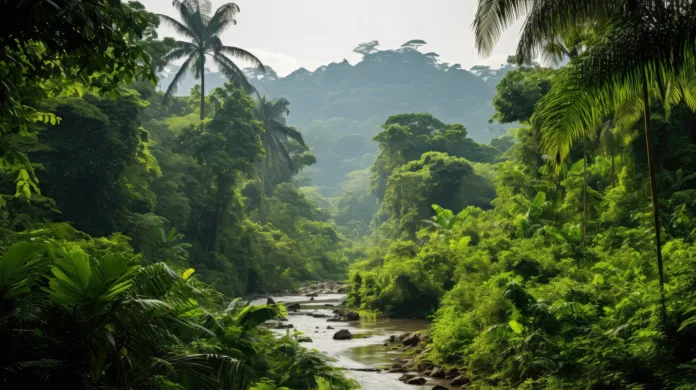In a shocking revelation, the Amazon rainforest, often referred to as the “lungs of the planet,” is facing a severe threat from climate change. A recent study has linked climate change as the primary cause behind the Amazon’s worst drought in over half a century.
This vast expanse of lush greenery plays a pivotal role in absorbing carbon dioxide from the atmosphere, serving as a critical defence against global warming. However, rampant deforestation has left the Amazon vulnerable to extreme weather events, making last year’s drought particularly devastating.
Embed from Getty ImagesWhile the Amazon has experienced droughts before, the one in 2023 was described as “exceptional” by researchers. In October, the Rio Negro, one of the world’s largest rivers, reached its lowest recorded level near Manaus in Brazil, marking a historic low over a century.
Beyond its role as a climate regulator, the Amazon is a treasure trove of biodiversity, hosting approximately 10% of the world’s species, with many more species yet to be discovered. The drought has disrupted ecosystems and directly impacted millions of people who rely on the region’s rivers for transportation, food, and livelihoods, hitting the most vulnerable communities the hardest.
While El Niño, a natural weather phenomenon, has historically triggered dry conditions in the Amazon, human-caused climate change has emerged as the primary driver of the extreme drought. Climate change has reduced soil moisture in two significant ways. Firstly, the Amazon now receives less rainfall during its dry season due to warming climates. Secondly, higher temperatures lead to increased evaporation from plants and soils, causing further water loss.
By comparing weather data and computer simulations, researchers determined that such an intense “agricultural drought” would have occurred approximately once every 1,500 years without human-induced warming. However, climate change has increased the likelihood of such severe droughts by about 30 times, with one expected to happen every 50 years under current conditions.
Dr. Ben Clarke from the World Weather Attribution group described the situation as “something quite exceptional.” If the world continues to rely on fossil fuels, leading to a 2°C warming, similar droughts in the Amazon could occur roughly once every 13 years, warns Dr. Friederike Otto from Imperial College London.
More frequent and severe droughts pose a significant challenge to the Amazon’s resilience, which has already been strained by deforestation, with roughly one-fifth of the rainforest lost over the past five decades. Trees play a crucial role in maintaining moisture levels and cooling temperatures in the region.
While this study did not directly address deforestation’s effects, previous research has highlighted how it exacerbates the Amazon’s vulnerability to drought.
The Amazon, often dubbed the “lungs of the planet,” is seen as critical in the fight against climate change because it absorbs more carbon dioxide (CO2) than it releases, helping to control global temperatures. However, there is growing concern that ongoing climate change, coupled with deforestation, could push the Amazon past a “tipping point,” leading to rapid and irreversible dieback, potentially making the region a significant source of CO2 emissions.
Despite the alarming drought record, there have been some positive developments. Deforestation rates decreased in 2023, according to the Brazilian space agency, with President Luiz Inácio Lula da Silva pledging to halt it completely by 2030. Combined with urgent measures to reduce greenhouse gas emissions, this commitment could still protect what remains of the Amazon.
Experts caution that while the loss of the Amazon forest is not inevitable in the short term, it underscores the urgency of stabilising the global climate to mitigate the increasing risk as the planet continues to warm.
